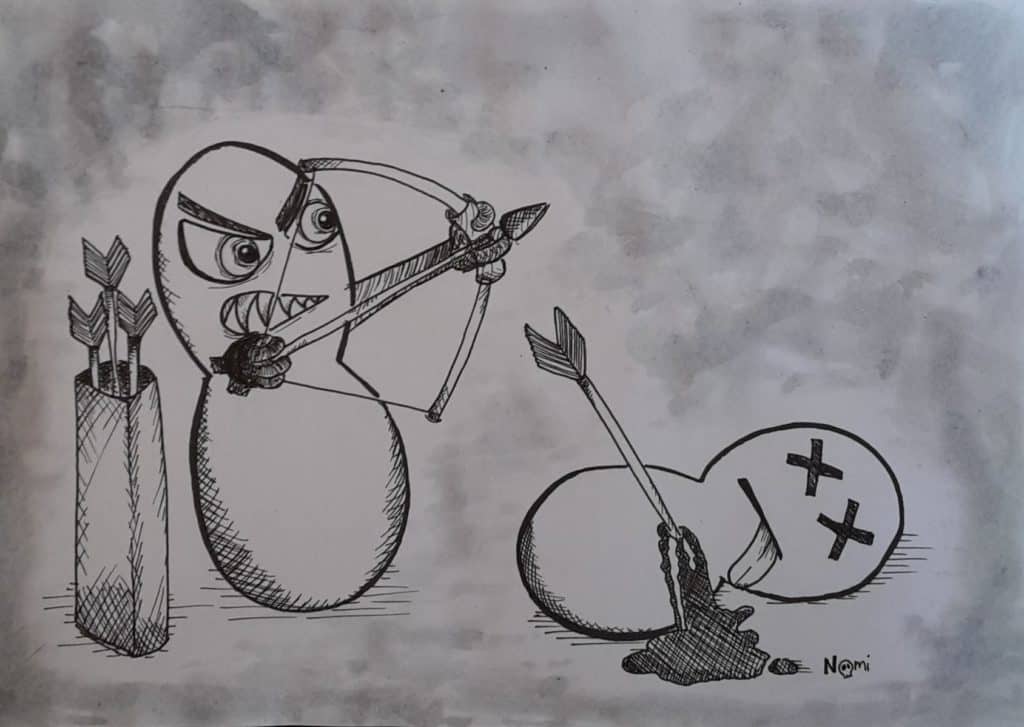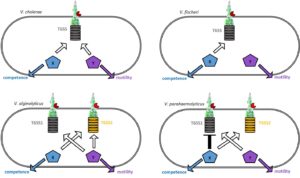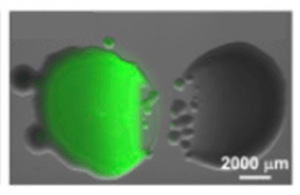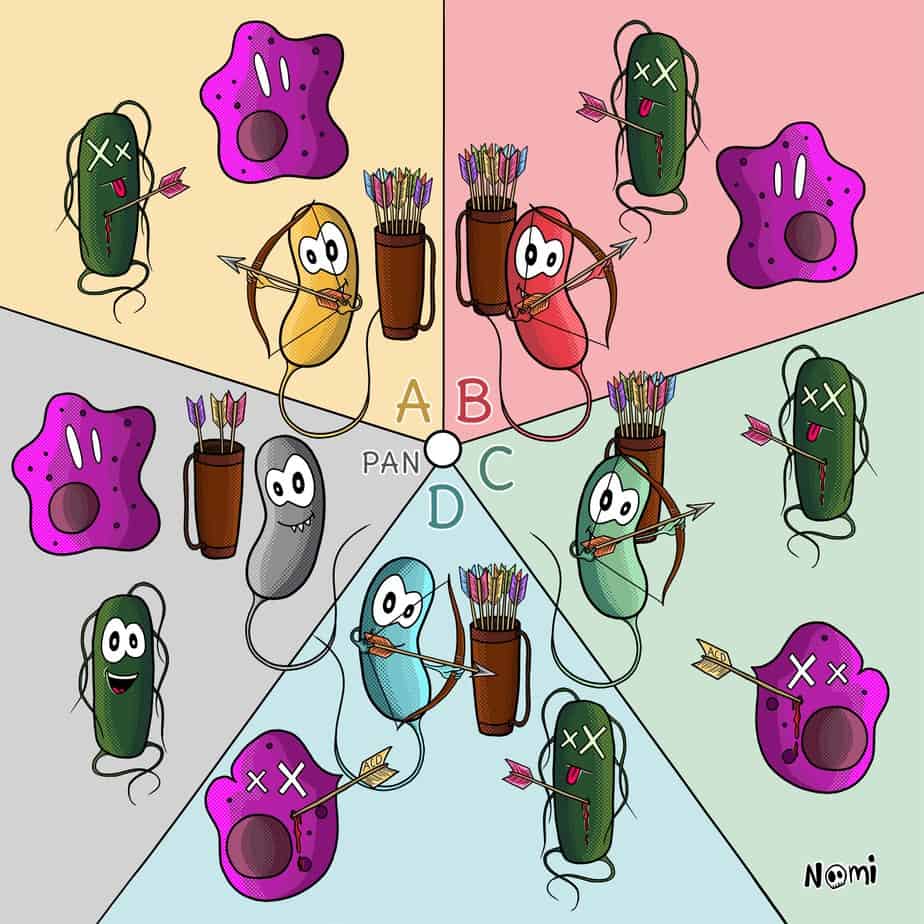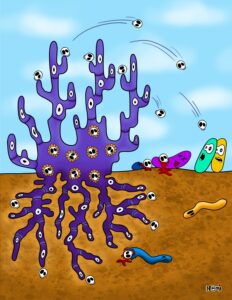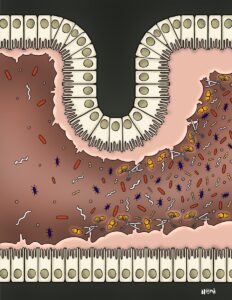Sometimes, bacteria have to fight for their lives.
They need food, more space and are just annoyed by intruding competitors.
So, when they decide to bring out the big (tiny) killer machines, they aim to hurt their opponents badly.
One of these killer weapons is the so-called type 6 secretion system. It looks like a crossbow that sits within a bacterial cell waiting to fire lethal arrows.
And these arrows are the real deal in this killer weapon. They punch holes into the membrane of the opposing microbes and carry lethal toxins into the cell.
Here, we will focus on these arrows and how they work.
Bacteria fire lethal spikes to kill
This type 6 secretion system crossbow is made up of two parts. One part – the base – stays within the firing bacterium. You can understand this as a stem inside the bacterium.
On top of this stem sits the second part – the arrow. This arrow is ready to be fired and will actually leave the bacterium. It consists of three parts, that you can also see in the picture below:
Such an arrow has a long thin spike (red) that is connected to the stem (black). Onto this spike, different toxins (purple) are glued and hang around the arrow. On the top of the spike, the arrow has a pointy tip (pink) that pokes the membrane of the prey bacterium.
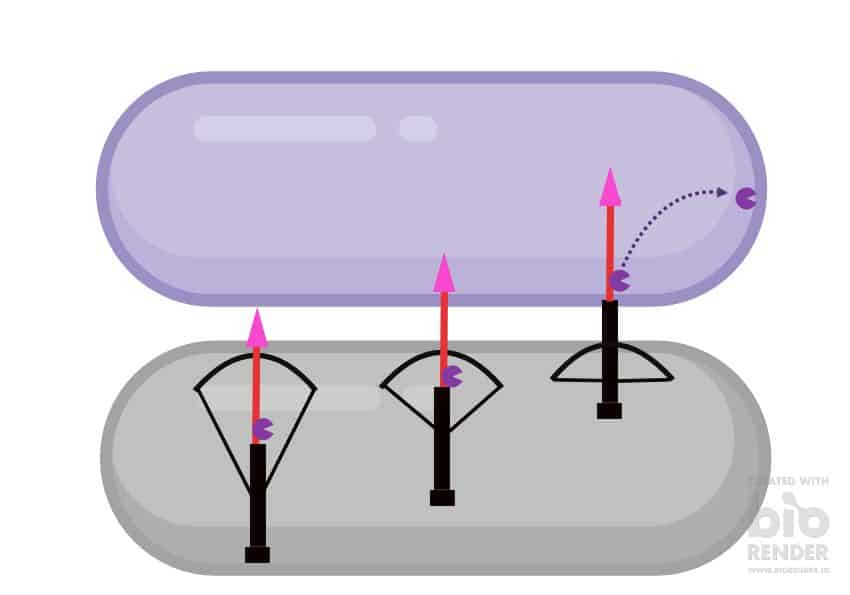
So, when bacteria shoot these type 6 secretion system arrows into other bacteria, they shoot all these different parts: the tips, the spikes and the toxins. And the toxins are what ultimately kill the prey bacteria.
Now, bacteria actually have several different proteins for these parts of the arrow lying around in their cells. And for long, it was not clear how bacteria decide how to assemble such an arrow. So, different studies looked at these different parts and how they interact with each other to better understand how bacteria build their lethal arrows.
Let’s start at the top.
A master hat protein decides for the assembly of the arrow
The protein at the very end of the arrow is called the PAAR protein. It is very sharp and has the shape of a hat. The bacterium uses this pointy end to punch a hole into the prey bacterium’s membrane.
Our bacterium of interest, Pseudomonas aeruginosa, contains seven of these hat PAAR proteins and ten different spike proteins. Generally, one PAAR protein sits on the top of one arrow spike while the spike is actually made of three VgrG proteins. So, one study looked at which of these pointy PAAR proteins belongs to which arrow spike.
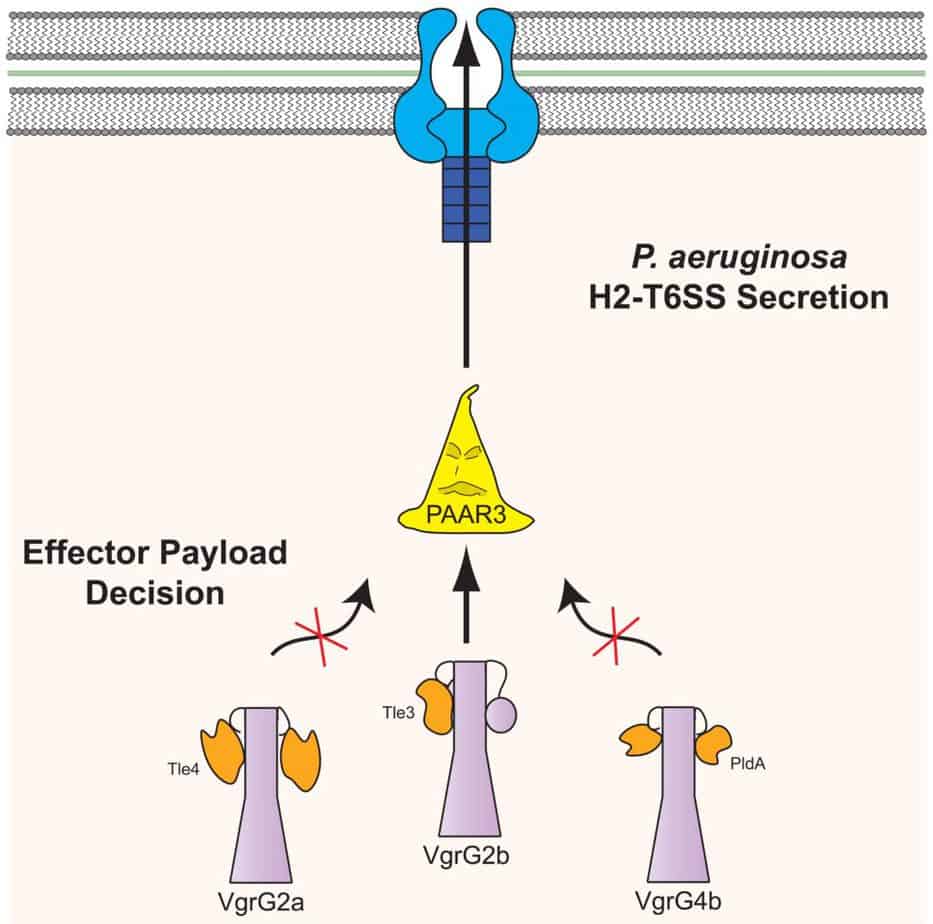
To do this, researchers made different versions of the same bacterium – so-called mutants. These did not have certain hat proteins anymore so they could not kill their opponents that efficiently anymore. Also, these bacteria were unable to fire their arrows in the first place.
With these experiments, the researchers could then identify the different hat-spike pairs in Pseudomonas aeruginosa. They also learned that the PAAR protein actually determines which arrow the bacterium will fire next.
Lethal toxins stick to the spike protein
Next, the spike proteins are incredibly important since they carry the different toxins into the prey cell. And for a toxin to stick to a spike, they both have specific patches. And these patches are unique for each spike-toxin pair.
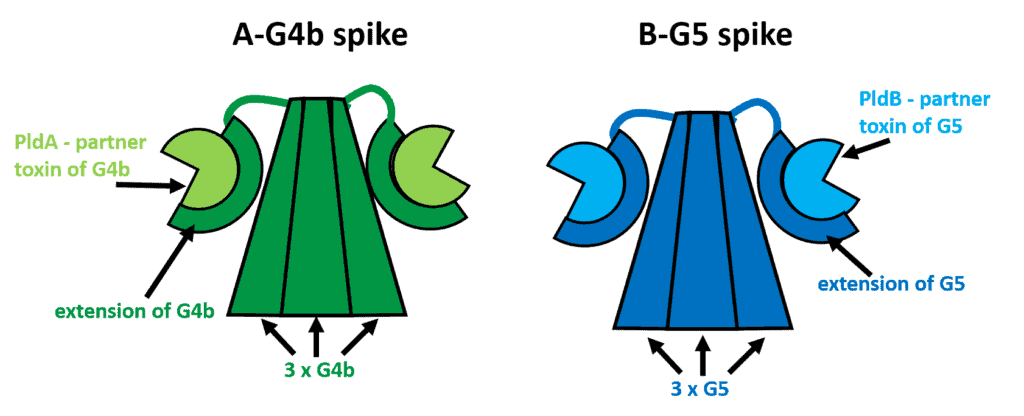
Researchers showed this by swapping the patches for the toxins between different spike proteins. They looked at the spikes G4b and G5 in the bacterium Pseudomonas aeruginosa. Usually, the G4b spike has a patch for the toxin A and the G5 spike has a patch for the toxin B.
So, Pseudomonas aeruginosa uses spike G4b to kill with toxin A and if it feels like killing with toxin B, it shoots spike G5.
The researchers then interchanged those patches. Now the G4b spike had the patch for toxin B and the G5 spike the patch for toxin A. And they showed that G4b could not fire toxin A anymore and G5 could not fire toxin B anymore.

Instead, Pseudomonas aeruginosa now fired toxin B with the G4b spike and toxin A with the G5 spike.

This helped the scientists better understand how bacteria shoot their toxins out of the cell. Another study then looked at how this patch works and how exactly the toxin is glued to the type 6 secretion system spike.
Bacteria can (sometimes!) fire spikes with random stuff
Other studies then look at whether bacteria could use random toxins and glue them to the type 6 secretion system spikes. This idea might give us tools to shoot whatever we want with this killer machine. However, in practice, it is a bit tricky.
So, researchers tried different versions of this concept in the bacterium Pseudomonas aeruginosa.
First, they took a toxin from the same bacterium but from a different part to the arrow. Instead, they glued this toxin to the spike of the bacterium and looked at whether it would fire an arrow with this toxin. Indeed, the bacterium could now shoot this new arrow into other bacteria, even though it was not as efficiently.
In a second try, they tried to patch a toxin from a different bacterium to the spike in Pseudomonas aeruginosa. This new arrow was not able to shoot that toxin into other bacteria. So, there are some limitations about how the spikes and their patches work to make toxins stick.
Understanding bacteria and their spikes for new strategies
This bacterial nanoweapon is an incredibly handy tool for bacteria. They can deliver lethal proteins into almost any organism. If we managed to understand this weapon better, we might be able to modify it and deliver whatever we want with this.
We might be able to transport therapeutics, drugs or even anti-cancerous agents. But until we’re there, still quite a bit of research is needed.

